Over the past decades we have been able to observe a change in the Earth’s climate, caused by an increasing amount of energy being retained in the atmosphere. This in turn has affected weather systems around the globe, causing more extreme weather. As a result, the prospect of weather control is more relevant than ever for the nations which are most directly impacted by severe rain and winds. Although the concept of weather modification is not new, it used to be primarily focused on rather limited aspects, such as cloud seeding to increase precipitation.
Recent proposals such as Japan’s weather modification moonshot program seek to find ways to prevent or lessen the impact of torrential rains, typhoons and similar extreme weather events which accompany climate change. This proposal is part of Japan’s multi-topic Moonshot R&D program which seeks to advance the state of the art in a wide range of fields in a very significant way by 2050. As far as weather modification is concerned, this naturally raises many questions. Clearly we are capable of affecting the climate through emissions of e.g. greenhouse gases and large-scale construction, but are there ways in which humans can affect the climate and weather in a more refined manner that benefits society, or is this something which will remain beyond our grasp for the foreseeable future?
Defining Weather
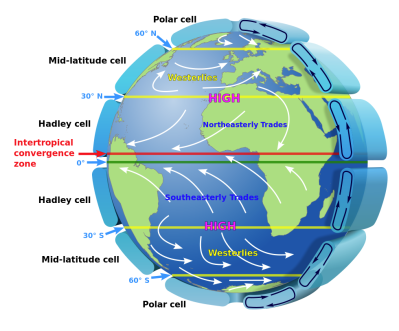
Weather is defined as the state of the atmosphere, which includes such parameters as temperature, moisture levels, as well as turbulence, such as wind and hurricanes. Driving forces behind weather are differences between air pressure, temperature and moisture between different parts of the atmosphere, where each parameter is driven by a number of different inputs, such as the angle of that part of the planet towards the Sun, available surface water and weather systems in nearby regions, with the Sun’s thermal input providing much of the impetus in this system.
The main difference between climate and weather is that the former is rather constant, pertaining primarily to large-scale systems including atmospheric circulation and ocean currents. These circulation patterns set the parameters for what ultimately turns into weather through the locally present temperatures, moisture and winds. As a chaotic system, most weather models rely on historical trends, together with the input from sensors that constantly feed temperatures, moisture levels and many more parameters into the weather simulation.
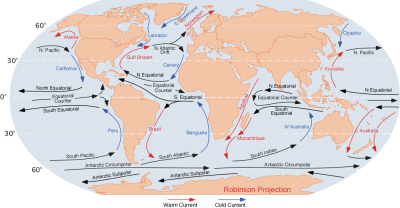
This ensures a fairly accurate prediction for the next few days, but as the amount of energy in this system increases (higher global temperature) or decreases (e.g. ice age), the historical weather trends become less meaningful, due to fundamental aspects such as the flow rate of the Gulf Stream changing, which in turn changes the distribution of thermal energy, moisture and thus local weather patterns.
The essential summary of weather is thus that it is primarily driven by the amount of thermal energy in the system, which itself depends on both the amount of solar irradiation and the percentage of this energy that is ultimately retained within the Earth’s atmosphere, surface and oceans, rather than radiated back into space.
In order to change or control the weather, it is therefore crucial to affect these processes in some manner. When we look at the practice of cloud seeding to induce precipitation, this involves adding more nuclei to specific clouds (or fog) around which moisture can collect before falling down to the surface. Here the weather system isn’t fundamentally changed to achieve this effect. Although the moisture that was thus extracted from clouds cannot turn into rain or snow elsewhere now, with the cessation of cloud seeding the system should return to its previous state.
Weather vs Climate Change
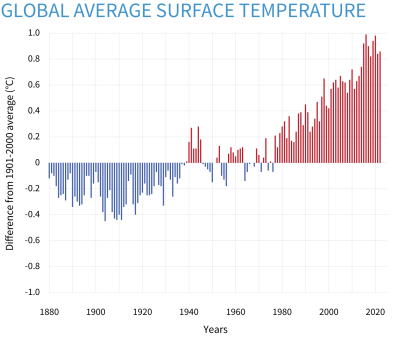
As noted in the preceding sections, there has been a net increase in the amount of thermal energy retained in the Earth’s atmosphere and oceans, which is causing shifts in the Earth’s climate. Because of this change, it means that the weather changes along with it. With more energy in the system, this result in more evaporation in warmer regions, leading to more extreme downpours where the atmospheric cells meet colder air, as well as droughts and extreme winds in general. This does not just threaten the safety of people, but also everything from agriculture to infrastructure.
Yet despite many considering these to be new considerations, weather and climate modification has been a topic for many decades, with the 1965 report by the Special Commission on Weather Modification (PDF) to the National Science Foundation (NSF) providing a glimpse at both the focus and state of the art back then. This is followed by a 1979 report produced by the Secretary of Commerce as a response to the National Weather Modification Policy Act that sought to take stock of the available options more than a decade after the report to the NSF.
While the benefits of climate control are obvious, as it allows humanity to prevent natural disasters and optimize the weather for agriculture and other human activities, both reports duly note that so far humankind is better at changing the climate without intending to do so. Human cities and clear-cutting of forests form heat islands, while the burning of fossil fuel and industrial activity add pollutants to the atmosphere that increase the heat retaining properties of the Earth’s atmosphere as a whole, thus raising global temperatures.
Interestingly, the 1979 report covers experiments performed on hurricane moderation (Project Stormfury) which employed the seeding of hurricanes (tropical cyclones) with silver iodide in the hope that this would lessen their force. This was based on the theory that such cyclones contain enough super-cooled water that would respond to the seeding, and thus disrupt the cyclone’s structure. This theory turned out to be incorrect, but would provide valuable information on these tropical cyclones.
It is postulated that rising ocean temperatures could increase the frequency as well as the strength of cyclones and tropical storms, but so far there is still a lot of uncertainty about the impact here, mostly due to how poorly we understand how tropical cyclones form and gain strength.
Terraforming Earth
Within the outlined context, Japan’s weather modification Moonshot program seems rather ambitious, even if the need for it is obvious. We’re seeing more extreme storms, more droughts and as a result more wildfires and flooding. Some countries like the US and China are investing heavily in cloud seeding as a way to extract more rain from the clouds, but this raises questions about the long-term viability and overall effectiveness of such an approach. Meanwhile preventing extreme rains and flooding are still beyond our capabilities, beyond designing cities and waterways in rural areas so that they don’t get inundated by large amounts of water.
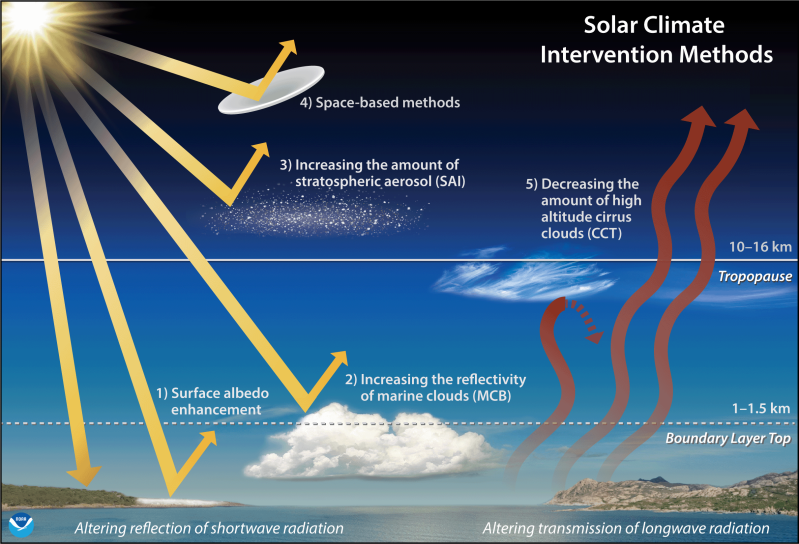
Among the more extreme weather modification proposals is that of solar geoengineering, which would entail essentially blocking part of the sunlight, accompanied by the extraction of CO2 from the atmosphere (carbon geoengineering), which is to this day a highly contentious issue with no clear (efficient) approach to accomplish this. Meanwhile the concept of blocking sunlight with aerosols in the troposphere along with other extreme proposals has been met with significant resistance.
Perhaps the elephant in the room here is that the only aspect of the Earth’s climate that we seem to have a solid control over is that of pollution with greenhouse gases, mostly from the use of fossil fuels and industrial processes. Curbing the pollution there using whatever means available is something that we can begin with today, as demonstrated in the 1970s already in the US, France, Sweden, Norway and Ontario through the use of hydro and nuclear power. Even countries like China that are often chided for their use of fossil fuels like coal are rapidly expanding the share of low-carbon power, with China looking to exceed the number of nuclear plants in the US today (92) with more than fifty plants under construction or in planning, in addition to its massive build-out of both solar, wind and hydro renewable capacity.
Pragmatism
As much as we would like to control the weather, including storms, typhoons, hurricanes and a gentle Summer’s rain, there is a reason why Japan’s Moonshot program is called this and targets 2050 as a hopeful date by which to have met any of the goals it has set out to achieve. The Earth’s atmosphere and oceans are after all enormous, with the sheer energy behind its circulatory systems, currents and resulting weather far beyond what we can reasonably hope to master.
This leaves us to consider what we have control over, which is essentially the aforementioned curbing of pollution, as well as changing cities and other areas affected by human activity to change their albedo and reduce loss of moisture via evaporation. This can be achieved through the planting of trees, restoring forests and greening cities while considering rainwater capture and retention. While not as futuristic as weather modification with fancy machinery and weather control grids as seen in Star Trek, these are proven methods that we have available to us today.

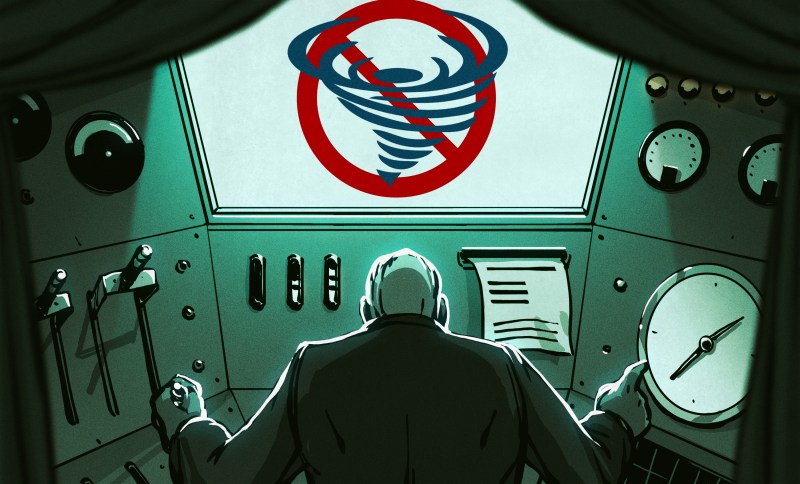













Weather modification, what can go wrong.
Doing nothing, what can go worse.
As humans, we barely understand the complexities of weather and climate on a macro scale over time. The hubris it requires to believe we know well enough to even discuss modifying the weather is astronomical. There is a point where we need to ask ourselves, “is doing nothing actually worse than doing something?”
We have already been asking ourselves that question for a few decades now. Seriously, whatever the right answer is we are definitely more prone to err towards the side of caution in this regard (and the exact opposite when it comes to energy consumption).
As climate change and our understanding of it has advanced our answer has gone from “probably not” to “maybe not” to “not at the moment but we had better start getting ready…”
“The hubris it requires to believe we know well enough to even discuss modifying the weather is astronomical.”
But we already are modifying the weather, hubris or otherwise. It’s beyond the point of the hypothetical.
Not doing nothing is not the logical inverse of doing absolutely anything. The current plan is to do nothing and hope. The end result of that plan is a planet on which we cannot survive, something ‘worse’ than that might affect the number of other species that survive us.
I’m not aware of any credible reports that identify global average (mostly polar) warming and rising CO2 as an existential threat to human existence. Yes, those two things are happening, and yes, some marginal species will require heroic efforts to preserve, but if all of Antarctica and Greenland melt, sea level will rise 1-2 feet. Our fair weather tides are usually more than that now. More CO2 means more green biomass and productive farming on average. Humans are a precious species of Planet Earth, and arguably more valuable as individuals compared to the animal kingdom. We are responsible for some of this trouble, but we are also the source of creative solutions. Have some hope, Shannon.
Trying to modify the weather in a beneficial way with our present level of understanding is like asking a chimp to fix an IPad.
That is a harsh comment on Genii.
Exactly, the people suggesting some of the more dangerous and irreversible ideas should be considered criminally insane until proven otherwise. What really stinks is that it is the equatorial nations who will get a loss of insolation, but they have nothing to do with creating the (supposed) problem. How about we decolonise weather modification and stop even suggesting that the first world has a right to impose such madness on the majority of humanity.
It was a good effort, though.
How long can they tread water?
https://en.wikipedia.org/wiki/Global_dimming
>The first systematic measurements of global direct irradiance at the Earth’s surface began in the 1950s. A decline in irradiance was soon observed, and it was given the name of global dimming. It continued from 1950s until 1980s, with an observed reduction of 4–5% per decade,[1] even though solar activity did not vary more than the usual at the time.[2] Global dimming has instead been attributed to an increase in atmospheric particulate matter, predominantly sulfate aerosols
The only practical solution is to pay more taxes. Or eat bugs.
I’d pay not to eat bugs.
The plan is for both.
Ever been around a butcher shop?
I have.
What makes you think you aren’t eating bugs?
There is actually an “acceptable level” for rat poop and insect parts in organic peanut butter according to the USDA. Not making this up.
“an average of one or more rodent hairs and 30 (or so) insect fragments are allowed for every 100 grams, which is 3.5 ounces.”
https://www.cnn.com/2019/10/04/health/insect-rodent-filth-in-food-wellness/index.html
its human generated global heating that is the problem
climate change is a term invented by the ones responsible for protecting the oil industry
and (I have checked) every measurable indication of global heating is showing accelerating increases in
heat,and heat generating inputs
and (I have checked) not one of the proposed mitigation plans is developed or has any backing or
funding to offset even the rate at which it is all getting
worse
the government “subsidies” to the oil industry are litteraly 1000times greater than.any funding to mitigate
global heating
grab some popcorn and watch the show cause thats all it is
Well, not really it is not about releasing energy on earth.
Amount of energy produced by humans is not that big and would be just irradiated into space.
The problem is that we are producing gases that pass visible light while blocking the infrared.
That’s why converting atomic energy to electricity isn’t really a problem, even thou we generate a lot of heat.
Oil ist the foundation of our wealth and development. The “Greens” plan deindustrialisation for their new religion of “climate protection”. No, thanks! I prefer the car over railway or public transport. It is quicker and more convenient.
Ok so you are just committed to oil, because that’s what worked for you in the past? You have no concern about what burning the ancient plant and Dino juice could do to the world around you? You have no concern about the fact that oil is not renewable and will eventually run out (technically just get too expensive to get what remains, but same result)?
If you skip the climate bit, there’s no point in not using whatever oil or coal there still is. Are you trying to save it so future generations could also not use it?
The correct answer would be to restrict its use to only applications where no practical alternative exists and to only use the minimum necessary. For example, require all new cars to get at least 35 MPG highway.
How about we just reduce our population? We can pollute as much as we want if there’s only a million of us. Quality over quantity, you know.
We can’t voluntarily manage to use cleaner fuels because it would be mildly inconvenient, how are you going to convince 8 billion people to commit suicide?
Who said anything about that? Birth rates are declining around the world and economies are trying their best to shrink. We just need to let that happen, or better yet, help it along. Encourage people to not have kids, maybe even tax families with more than one child to fund UBI (to allow people to not work, reducing industrial production). There’s peaceful ways to do this, no need to be savages about it.
Make sex a taboo activity. ;-)
Birth rates are declining but no where are they declining at such a rate to reduce the population of the world to one million. We’ve seen the impact of one child per family programs, essentially ineffective.
Well actually, |;-) the Chinese population is quite a bit smaller than at its peak, and will continue to shrink for decades. India is another matter.
Can we please not joke about mass human death? I’d appreciate it.
“We’ve seen the impact of one child per family programs, essentially ineffective.”
So… basically as effective as your average “carbon tax” and similar grifts.
Look how that’s working out for China and Japan.
Not everyone. China is trying to INCREASE births.
https://www.tibetanreview.net/chinas-record-high-youth-jobless-rate-set-to-worsen-even-as-the-party-struggles-to-improve-birth-rate/
Suicide Booths like in Futurama or open Soilent Green factories.
They already did commit suicide a long time ago. The method is slow-acting.
It won’t happen fast enough to help with the immediate problems. But yeah, it will be good if the population in 2100-2200s stabilizes somewhere around a billion. If we focus on quality, there won’t be any need to pollute, though.
Thanks Margaret Sanger.
Thing is, if you somehow reduce the world population to a billion, there will be people who see it as a “free buffet” situation. There’s all these natural resources being unexploited for no reason – so they start to fill the earth with people again.
On the first point, as the birth rates in western and northern countries drop, they are replaced by migration from the global south. As the emigration reduces population pressure in the south, the birth rates there stay up and the global population never starts to decline. That’s the Malthusian trap: people on the whole will multiply to the point of poverty. If you create a gap somewhere, people move in to fill that gap and then multiply until they’re poor again.
Oh, sure, let’s just have lots of wars… How very Malthusian of you Mr Anonymous.
Malthus was correct. The moral content is not related to whether the claim is true or not true. Only the dead have seen the end of war.
You can start with urself 🥱 We can’t wait to see your act of kindness for greater good.
Nature will eventually kick in. Our population is unstable and will revert to a previous level.
This is also the plan.
Here’s my easy 3 step program that meaningfully reduce carbon emissions in the world.
1. Convert all power plants to nuclear.
2. Invade China/India.
3. Magically invent a battery that isn’t shit.
You should really consider running for office, you could campaign on these ideas alone.
Invent a battery that runs on shit.
Duracell already exists.
B^)
Come on now, you’re insulting shit.
Plant more Forrests hard wood especially . On a scale much larger than they are currently being destroyed. This will help with CO2, water and less heat hitting the surface of the planet.. Harvest to store wood as furniture, used for buildings etc
Organic waste pumped back into used up oil wells.
More Rain needs to be captured to drain back into ground not run into sewer system.
Stop building houses on farm land and flood plains….
Stop building almond farms in the desert.
Stop wasting concrete in deserts
Ban the construction of new factory farms and rapidly phase out the existing ones, replacing it with sustainable organic farming.
I appreciate that everyone else joined in on the fun but you seem to honestly believe this so let me spoil the fun for you.
5000000000 – metric tons per year of CO2 emission in USA.
0.02 – metric tons absorbed by a tree in a year.
250,000,000,000 – Number of adult trees needed to absorb our CO2 emissions. So yeah we just need to plant a casual 250 billion trees, it’s so easy. But don’t worry China has 5 times the CO2 emissions so hey that’s only over 1 trillion trees, we got this guys. Why cut down on CO2 emissions using my 3 step plan when you can just plant 1 trillion trees!
It gets worse, what do you do with all the wood when they are grown?
818 MILLION acres of forested land in the USA alone. 200 to 2000 trees per acre. 163 BILLION to 1.63 TRILLION trees. Whats the problem with planting a few billion more trees?
Step 3 is crucial.
A nuclear plant of similar size produces a lot less energy than a dirty fossil fuel plant. I like nuclear too. But that alone isn’t going to cut it. You failed at step 1.
No it doesn’t. Where’d you get that?
At this point I have an easier plan in one step: Nuke everyone that isn’t me!
The way that our great hope for the world, the USA democracy, can push important issues like action on climate change aside by turning into the sh!t show that it has degenerated into right now, shows the conservative influences and decisions to choose immediate doom for millions of people and organisms just for the greed and power of money. Unless we see some real leadership and commitment from the largest economy on earth we are doomed.
It is a pity that USA senators are are not sitting on the disappearing Antarctic ice with the Adele penguins. Maybe then we might see some clear sighted vision and action instead of the time wasting, clown antics we see at the moment.
It’s a hard part for…reasons.
https://youtu.be/GBp_NgrrtPM
We aren’t what the founding fathers intended.
https://www.voanews.com/a/usa_all-about-america_todays-democracy-isnt-exactly-what-wealthy-us-founding-fathers-envisioned/6201097.html
We should do like Apple is doing and eliminate all the C from the atmosphere.
That’s a misreading of the ad. They were talking about permanently removing carbon from the atmosphere, as in sequestering it and lowering the carbon levels, not eliminating all carbon. They never said anything about eliminating all carbon.
I think that ad is revolting and a huge pack of lies, but it does no good to misrepresent and lie about it ourselves.
Oh, they weren’t talking about USB-C?
B^)
No, they want to remove C from the atmosphere.
And replace it with C++.
I’m sure a company with a trillion-dollar-plus market cap like Apple has no ulterior motives for doing so.
I take all advertisements that gloat about green-ness with a grain of salt.
Or you can hold your breath while Shell “leads the way through the energy transition.”
So they want to terminate all life on earth?
CW-7
Make rooftops and roadways white! Even if it doesn’t help global warming much it will help urban heat islands.
Till everything that fly’s poops on it…including planes.
https://www.rd.com/article/flush-airplane-toilet/
Brake and rubber dust and motor grease/oil would be a bigger thing to worry about, but in certain parts of the world low-traffic roads are almost white.
In certain parts of my Georgia county…
More patches of trees and plants and rivers between buildings and green roofs would also help make it cooler and also reduce flooding/erosion.
What, you don’t want Bill Gates to extend, embrace, extinguish your life support system and then sell you a subscription to one of his underground habitats? You don’t trust this guy? He wears sweaters!
So did Steve Jobs.
I was left feeling I could never again complain about the weather being too cold after having suffered the unprecedented heatwave here in late June 2021, described by meteorologists as a ‘stalling dome’ of high heat, that resulted in 619 confirmed heat-related deaths.
But then I did complain when most of the province, including southwestern B.C., suffered an unprecedently cold bunch of days in January, which was described by meteorologists as a ‘stalling dome’ of freezing cold. … I doubt it was just coincidental; rather, such extremes are basically due to climate change via human-caused global warming.
Many people are fleeing global-warming-related extreme weather events and/or chronic crop failures in the southern hemisphere widely believed by climate scientists to be related to the northern hemisphere’s chronic fossil-fuel burning, beginning with the Industrial Revolution.
Because the earth’s temperature has slightly increased since the industrial revolution and more people die from cold than from heat the number of temperature related deaths has actually dropped. And no, global warming doesn’t make it colder.
Excellent article showing the importance to consider the orders of magnitude among the proposed solutions. And yes, the only we can control is our emissions. In such low inertia systems, when we apply breaks on the “vehicule” it takes several miles before it even starts to slow down. And also, for the same reason, the mild climate as we know it will take thousands of years to come back.
It gonna hurt badly but we have the chance to see it coming and damper the fall. I beleive this article is nice in particular because it doesn’t try to shame or terrify anybody. It rather focuses on informing people in the hope the more reluctants start to participate in designing new ways, new ideas, to help future generations (our childs). We need everybody. I just hope wars won’t destroy all our efforts and hopes.
Here (enfin!) Jean-Marc Jancovici in a english interview. I’ve been waiting this one for a long time. Not much people on Earth can talk about this very complex topic in such a fluent way. In a way that average people can understand easily. There is a lot FACTS to LEARN here. Welcome to reality….
https://www.youtube.com/watch?v=WYLKtz5A5pA